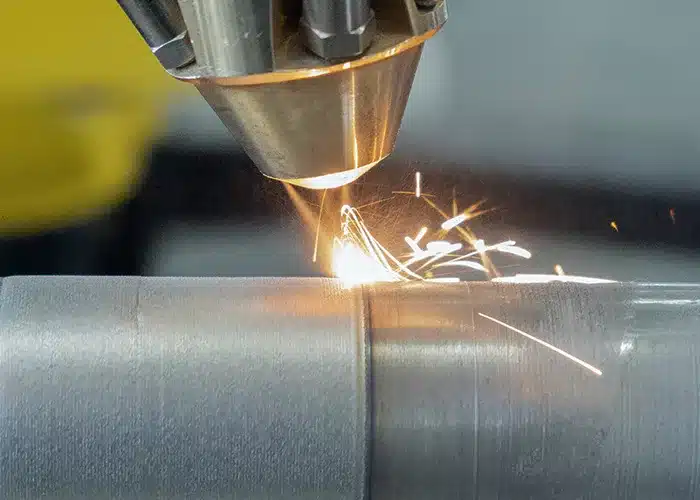Laser cladding mainly uses iron-, nickel, cobalt-base alloy and metal ceramic, of which specific performance depends on texture and phase composition of cladding layer. Meanwhile, their chemical components and cladding crafts can decide overall properties of cladding layer.
Among them, iron-base powder is used for wear and corrosion resistance and ideally right for fields where operating condition is below 400℃, such as, hydraulic support in coal mine, roller table in steelworks, and agricultural tools. When stainless steel and high chromium cast iron powders are in use, the cladding layer is made from non-equilibrium austenite and carbide. Because of interaction among solid solution strengthening, dislocation and carbide, its hardness can reach up to HRC60. The iron-base alloy is frequently used as a substitute of nickel-base alloy due to its low costs.
As for cobalt- and nickel-base alloy, main strengths lie in high hardness, wear, heat and oxidation resistance. Technically speaking, cladding layer may face grain refinement in the process of laser rapid setting. The unsteady state phase and supersaturated solid solution are featured by high hardness, wear and corrosion resistance. Given this, their laser cladding layer is widely used in harsh working conditions like sealing surface of high-parameter valve. To be specific, annular surface of exhaust valve seat of automobile engine can be cladded with Stellite alloy.
Nowadays, Stellite alloy dominating cobalt-base alloy (based on Stellite and containing Cr, w, Fe, Ni and C) is widely used for non-lubricated high-temperature wear parts. If B and Si are added, the cobalt-base alloy powder will be highly wet and self-fluxing. But, an excess of B contents may increase the likelihood of alloy cracking.
With cobalt as its main ingredient, the cobalt-base alloy powder stands out in high-temperature resistance and comprehensive mechanical properties. After setting stable solid solution by cobalt and chromium, its low carbon content makes substrate alloy high in resistance to high temperature, wear, corrosion and oxidation. Considering that cobalt-base self-fusing alloy powder is relatively close to steel parts in fusing point, coefficient of thermal expansion and density, its cladding layer will meet less thermal shrinkage stress during condensation. Thanks to good thermal stability, cobalt-base alloy is unlikely to evaporate, sublimate and go bad apparently while cladding. Hence, its powder will be well wetting during fusion and it is good to get smooth and flat cladding layer featuring favorable compactness if the powder is uniformly spread on the substrate after fusion, so as to increase binding strength between cladding layer and substrate materials.
When it comes nickel-base alloy, its wear and corrosion resistance, and excellent stability are relatively eye-catching to adapt to corresponding workplaces, such as, oil drill pipe, plunger piston and engine crankshaft.
At last, the metal ceramic powder is used for generating an uniform, compact and resilient composite layer strictly binding with substrate under the action of high-power laser beam. Although ceramic is more resistant to wear and corrosion than other general metal materials, it may tend to crack during cladding.
In combination with iron- and nickel-base alloy, ceramic materials have been widely applied to the strengthening of wear-resistant materials. We have gathered lots of experience in cladding agricultural tools, repairing roller table and so on.
In a word, laser cladding can significantly extend service life of new workpieces, even rejuvenate the used parts. Generally speaking, lifespan of spare parts strengthened by laser cladding technology is 5 times or over longer than that of ordinary one. As laser cladding is rapidly developing over years, it has been widely used in coal mine, automobile, petroleum, agricultural machinery and many other industries, blazing a new trail for the fabrication and repair of workpieces.


